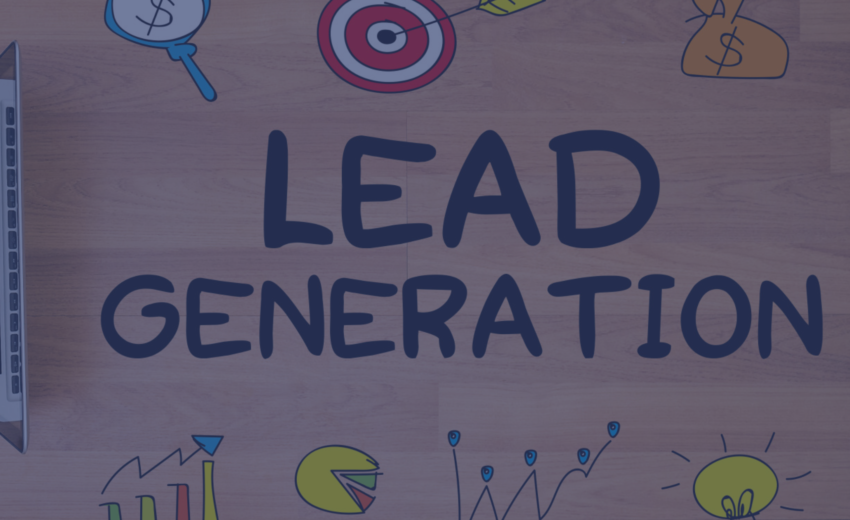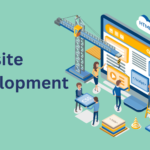
Lead generation is the process of attracting prospective consumers to increase future sales. It is a crucial component of many businesses’ sales processes.
Understanding lead generation and how to use it effectively can be crucial for converting leads into paying customers via the sales funnel. This useful guide will explain the fundamentals of lead generation, why lead generation is important, what a qualified lead is, lead generation strategies, and how to maximize lead generation.
Lead generation explained:
- Why is the generation of leads important?
- Generation of leads in the digital age
- What are leads?
- What is an eligible lead?
- Generation of sales leads versus sales prospecting
- Strategies for generating leads
- Best practices for generating sales leads
- Lead generation and lead management
- Lead nurturing strategies for increased participation
- Understanding the sales funnel and lead assignment
Why is the generation of leads important?
The days of purchasing cold-call databases are over. Modern lead generation has made it possible for businesses to collect information about prospective purchasers and tailor their marketing strategies and sales pitches to their needs. Prospecting offers the following advantages:
- Target the correct customer: Sales lead generation is used to identify prospects who have already expressed interest in the company’s products or services and to assess audience potential. This enables the company to concentrate its marketing and sales efforts on prospects with a higher likelihood of converting to customers.
- Increases brand awareness: The generation of sales leads can increase brand awareness. Leads express an interest in your brand; by cultivating this interest, you educate them on your brand’s values, products and services, and features and benefits.
- Allows for data collection: The generation of sales leads provides an excellent opportunity to collect information about prospects. You can collect information on how they became aware of your company and its products and services, which marketing methods generate more leads than others, which forms of communication engage the lead the most, their needs and desires, etc. This treasure trove of data will allow you to tailor your marketing and communication strategies, products, and/or services to satisfy the needs of your customers.
- Increases brand loyalty: By generating and nurturing leads, businesses can manage the interests of individuals interested in their products and services. The creation of this community fosters long-term brand loyalty.
This is accomplished primarily through digital channels employing efficient inbound, outbound, and sales marketing alignment techniques.
What is inbound marketing?
Inbound marketing is a crucial strategy for generating leads. It is the process of generating interest in your company through the creation and promotion of content.
- Content Creation is a marketing strategy involving the creation of pertinent content to attract leads seeking a solution to a specific problem. This can be accomplished through the use of blogs, videos, eBooks, infographics, and other types of publications.
- Content Promotion is the process of making content visible to potential consumers using techniques such as search engine optimization (SEO), pay-per-click (PPC) advertising, and social media.
What is outbound marketing?
In conjunction with inbound marketing, outbound marketing can be used to target specific opportunities and reach out to prospects. Emails, events, and advertisements are a few examples of outbound marketing.
- Email Marketing can be used to distribute new content, send event invitations, share news, and maintain customer contact.
- Event marketing affords you the chance to promote your brand, develop personal relationships with customers, and interact with event attendees.
- Display Ads can be targeted to prospects with particular behaviors or demographic characteristics.
- Content Syndication is the practice of publishing your content on third-party websites to increase brand awareness.
Sales and marketing coordination
The key to a successful lead generation strategy is sales alignment. Using methods such as social selling, outbound emailing, and networking, the sales team can generate leads independently.
Before distributing leads to sales, customer relationship management (CRM) software can be used to monitor and evaluate leads.
Generation of leads in the digital age
As a result of the expansion of the Internet, the purchasing process has changed drastically. Customers can now utilize search engines, social media, blogs, and other online channels to conduct extensive product investigations prior to meeting with a sales representative.
While it is positive that prospects are knowledgeable about the products and services they pursue, it creates difficulties for businesses in terms of brand awareness. To combat this, businesses must establish a robust online presence using inbound marketing techniques such as search engine optimization and content marketing.
The digital age has facilitated the research and comprehension of prospective leads by businesses. By identifying the wants and needs of their target consumers, businesses can personalize information to attract them and qualify potential leads based on engagement and demographic data. It is becoming increasingly essential for businesses to cultivate and maintain relationships with them. So, what exactly is a prospect, and how do you cultivate them?
What are leads?
A lead, also known as a prospect, is an individual who has expressed interest in your business’s products or services but has not yet converted into a customer. There are two commercial categories for leads: business-to-business (B2B) and business-to-consumer (B2C). B2B sales leads involve business-to-business transactions, whereas B2C sales leads involve individual transactions. Lead generation for B2B and B2C presents distinct requirements, challenges, and opportunities.
What is the definition of a “qualified” lead?
What, then, is a qualified lead? A quality lead is an individual who has a distinct need for your product or service, the intent to purchase it, and the financial means to do so. Not all prospects are equal. Leads must be qualified based on the level of interest they have shown in your products or services or the stage of the consumer lifecycle.
Types of qualified leads:
Marketing qualified lead (MQL): A marketing qualified lead is a person or organization that has engaged with the outreach efforts of your marketing team but is not necessarily ready for interaction with the sales team. They have shown some interest in your products and/or services, so they may respond positively to lead nurturing, even if they are not yet ready to purchase. As the lead advances through the sales cycle, typically as a result of nurturing, it can be transferred to sales. Before distributing leads to sales, customer relationship management (CRM) software can be used to monitor and evaluate leads.
Sales-qualified leads: A sales-qualified prospect (SQL) is a person or organization that expresses explicit interest in becoming your paying customer. At this point, sales representatives are maintaining the relationship that marketing started. Because these leads have already been qualified, they are more likely to convert into sales, and the latter stages of the sales cycle tend to move more rapidly. A strong alignment between marketing and sales can result in more efficient lead generation and higher conversion rates.
Product-qualified lead (PQL): A product-qualified lead is a person or business that has previously used your product or service and has expressed interest in becoming a paying client. Typically, companies offering free trials or samplings of their products or services have access to product-qualified leads. Product-qualified prospects are valuable because they have previously utilized your product or service and therefore have a high conversion probability.
Service-qualified leads (SQL): A service-qualified lead is a person or organization that indicates interest in purchasing your product or service to your customer service or sales team. This is the most qualified form of lead because the prospect approaches you with an offer to purchase your product or service. A service-qualified prospect could also be an existing customer interested in upgrading to a premium version of your product or service.
After a lead has been produced, it must be qualified. Typically, a prospect is qualified by gathering information about them. Focusing on qualified prospects will boost your sales conversion rate and ROI.
Here are some ways to qualify your leads:
- Determine the level of interest in your leads. A lead is generally willing to provide personal and contact information and is likely interested in your products or services. The quantity of information required to validate a lead varies by company and by the complexity of the service or product.
- Lead scoring: Lead scoring is a method of ranking and prioritizing leads based on their value, allowing sales and marketing teams to concentrate on leads with the highest conversion potential. Lead scoring involves assigning numeric values (or weights) to leads based on several factors to classify them on a scale ranging from “interested” to “ready to buy”. The characteristics and weights will vary by company, but they must be the same for all sales and marketing teams within an organization.
Using a combination of explicit and implicit lead scoring, a business can make a meaningful assessment of a potential customer.
- Exact lead scoring takes into account the degree to which a lead’s profile reflects the buyer persona of an ideal customer. This consists of a customer’s demographic information, such as their job title, industry, or location. It indicates the relevance of a prospective lead to your company.
- In implicit lead scoring, the frequency and nature of a prospective lead’s interactions with your business are considered. Visits to the company website, prospect activity, and email marketing responses are some indicators of this. Implicit lead scoring indicates a prospective lead’s level of interest in your business.
The higher a lead’s score, the closer it is to converting into a customer. Whether you’re dealing with consumer or business leads, lead-scoring success depends on a variety of factors, including high-quality content, well-defined buyer personas, pertinent interactions, and sales team involvement. In this regard, lead generation software can be beneficial, as it frequently includes automated lead scoring. Learn more on the blog about how to generate leads.
Generation of sales leads versus sales prospecting
“Lead generation” and “sales prospecting” are frequently used synonymously. While lead generation and sales prospecting share the same objective and exhibit similar characteristics, there are distinct distinctions between the two:
- Typically, marketing departments are responsible for generating sales leads, whereas sales teams manage prospecting.
- Prospecting is the process of identifying prospective consumers and converting them into customers.
- Typically, sales lead generation is automated, whereas prospecting is predominantly manual.
Strategies for generating leads
We have previously discussed strategies for converting an anonymous visitor into a lead; however, how do you attract the anonymous visitor in the first place? At multiple online and offline consumer touchpoints, lead generation can occur. Several of these are addressed in the following sections.
1. Strategies for generating online leads
Depending on the platform you’re using to acquire leads, there are a variety of tactics and strategies for online lead generation:
- a) Twitter lead generation: Twitter provides a valuable feature, Twitter Lead Gen Cards, which enables you to collect lead information directly within a tweet. All that is required of potential leads is to enter their name, email address, and Twitter handles into the card and select the “Submit” button. You must create compelling Twitter content that engages visitors and motivates them to actively interact with you.
- b) Facebook lead generation: Facebook’s product offerings include lead generation tools. You can generate leads from your website or Facebook profile through paid advertising. Additionally, you can include connections on your Facebook page that direct users to your website. Engaging content is essential for encouraging visitors to engage.
- c) LinkedIn lead generation: LinkedIn makes it simple to capture lead information. Users’ profile information is automatically populated in their Lead Generation Forms when they select a call-to-action button that you’ve created. LinkedIn profile data includes beneficial information such as the user’s employer and position; using LinkedIn to generate tools is highly effective, particularly for B2B sales.
- d) Search engine lead generation Popular search engines such as Google receive billions of visitors per day. A robust presence on search engines is likely to increase the number of visitors to your site. You can launch a pay-per-click campaign with the support of website fundamentals like search-engine-optimized content, successfully targeted keywords, etc. for maximum discoverability You can launch a pay-per-click campaign with the support of website fundamentals like search-engine-optimized content, successfully targeted keywords, etc. for maximum discoverability.
2. Strategies for offline prospecting
Offline lead generation is also possible. In many instances, offline sales lead generators may be more efficient than their online counterparts, as the ability to interact with a lead in person can have significant implications for qualifying them.
- a) Speaking as a guest at conferences and events: Speaking as a guest at conferences and events is an excellent method to demonstrate your expertise in your field. Sharing information is a great way to engage your audience, the majority of whom are likely interested in your product or service if they continue to listen to you. Ensure that your speech provides value to the audience and is not merely a sales presentation for your company and products.
- b) Expos and trade shows: Expos and trade shows are excellent methods for generating leads. Ensure that you have active demonstrations of all of your products and services, as well as enough trained staff to interact with visitors and answer their queries. Your team must be diligent in collecting the contact information of leads and, more significantly, in following up with them after the expo or trade show.
- Referrals are highly effective at generating sales leads, particularly for B2B sales. To encourage referrals, you could offer some type of referral bonus. If not, you should at least thank the individual who provided your reference for doing so.
- d) Loyalty programs: Loyalty programs are an excellent method to generate leads, particularly for brick-and-mortar businesses. Loyalty programs encourage prospective leads to provide their contact information for sign-up and, as a benefit, encourage repeat visits.
Best practices for generating sales leads
The generation of high-quality leads is crucial for any sales team. Follow these best practices to ensure that your sales team’s time and effort are spent pursuing prospects with a high likelihood of converting.
1. Consider your end objective: Effective lead generation begins with a well-defined end objective. A well-defined objective allows you to target and identify the right type of prospects, thereby increasing their likelihood of becoming paying customers.
2. Define your target audience: Defining your target audience enables you to direct your lead generation efforts toward campaigns, channels, and audience personas that are most appropriate. If you are aware of your target audiences, you can devote your time and resources to conveying the appropriate solutions and value propositions to specific audience segments according to their needs and aspirations.
3. To convert a prospect into a customer, it is necessary to make them aware of relevant products and services and to keep them engaged in meaningful ways. Give your leads, prospects, and customers new information or perspectives to enrich their lives.
4. Provide direct communication channels: Ensure that your contact information is prominently displayed and easy for leads to locate. Leads may have questions or concerns about your products or services, or they may wish to make a purchase. The greater the accessibility, the greater the likelihood that they will become customers.
5. Offer incentives: Offers, promotion codes, and other incentives can be extraordinarily beneficial for lead generation and conversion. From the perspective of lead generation, incentives can help persuade prospects to volunteer their contact information, thereby generating leads. From a conversion standpoint, incentives can encourage prospects to make purchases and become customers.
6. Monitor and modify: It is essential to continuously monitor and modify your lead generation strategy to ensure that you generate the appropriate number and quality of leads. Cost per lead, lead conversion rate, and lead conversion time are key metrics to track.
Lead generation and lead management
The next step, now that you understand what leads are and how they differ, is to nurture them through the lead-generation process. Consequently, what is lead nurturing?
Lead cultivation ensures that “not-ready-to-buy” prospects engage with your brand. Understanding the consumer based on their business profile, the industries they serve, the products or services they engage with, and where they are in the sales funnel is necessary for effective lead nurturing. Providing content that encourages lead engagement will enlighten the information-gathering and evaluation phases of prospective buyers, thereby boosting sales conversion.
Lead-nurturing strategies for increased participation
Leads interact with your company and brand via multiple online and offline channels. Tracking all of these interactions to use them for lead generation is a time-consuming task; therefore, lead generation software should be used to automate this process.
It requires data capture to convert anonymous visitors to your website or social media channels into leads. The type and quantity of data a company must gather to convert an anonymous visitor depends on the product or service it is attempting to sell.
Step 1: Determine your target audience
The initial step is to develop a consumer persona. You can construct a fictitious representation of your ideal customer by utilizing both market research and actual data from existing customers.
- Where to conduct data research:
- Population demographics
- Spending practices
- Buyer intentions and motivations
- Common obstacles to closing a sale
- Buyer’s aims,
Step 2: The second phase of the buyer’s voyage
Now that you have an understanding of your audience, it is essential to comprehend their behavior. Utilizing the stages of the buyer’s journey and delivering content to support them at each stage of the sales funnel is an effective strategy. Below are the three phases of the buyer’s journey, their respective objectives, and how sales funnel content marketing can support them.
The observance phase
During this phase, the consumer attempts to comprehend a problem or investigate a requirement. They look for answers to queries by researching high-quality informational blog posts and e-books and creating a survey or quiz. During this phase, the possibility of conversion is low, but data collection is conceivable. Here are some strategies for encouraging site visitors to provide information that will enable you to convert them into leads in the future.
- 1. Pop-up forms: Skillfully positioned pop-up forms can encourage website visitors to provide their contact information. A welcome pop-up on your landing page can encourage visitors to sign up for an ebook, and exit intent pop-ups can be triggered when site visitors show symptoms of leaving.
- 2. You can use pop-ups, banners, and other forms of ad placement to exchange offers for contact information from site visitors. This creates a situation where both parties benefit: the customer receives an offer, and you receive information that could help convert them into a prospect.
- 3. Contests are a simple way to convert site visitors into leads. Not only do contests encourage visitors to provide their information, but they also generate engagement. Contest participants have a vested interest in your organization or brand.
- 4. Social presence is mandatory for companies and brands today, but it may not be sufficient for effective lead generation. Companies and brands must practice social listening by monitoring their social profiles and comprehending the responses of their followers and website visitors to their posts. Social listening conveys a positive message to prospects, indicating that the company or brand is attentive and cares about what they have to say.
- 5. Certain offline methods of generating leads are still pertinent for events and conferences. Your company’s or brand’s visibility at events, conferences, and expos allows you to put your best foot forward. Interact actively, collect leads’ contact information, and follow up assiduously.
The stage of contemplation
In the contemplation phase of the buyer’s journey, prospective leads are actively seeking a solution to a problem. Consideration will be given to carefully chosen sources that provide the most pertinent and effective remedies to the problem. At this juncture, it is crucial to nurture the prospect with content that can be used to collect information and contact them. Here are some methods to encourage visitors to provide you with information that will allow you to convert them into leads:
Online sales lead generators, such as product comparison guides, ebooks, whitepapers, webinars, videos, and live conversations, are an efficient and practical method for generating leads.
The choice phase
In the decision period of the buyer’s journey, a person is prepared to make a purchase. The information gathered during the buyer’s journey will be shared with the sales team, which will make initial contact using conversion-optimized strategies. Consider including product/service demonstrations, online courses, a well-positioned pricing page, and free trials in your website’s content.
Once sales opportunities have been converted into customers, create loyalty and adoption programs that will continue to drive conversion. These consist of:
- Orientation programs
- Product adoption initiatives
- Contract renewal initiatives
- Reactivate missing sales
Tools for generating leads
The primary software you can use to evaluate your efforts to generate leads for your products and services is:
1. Software for lead generation allows you to monitor interactions, track them, and capture relevant data. Different lead generation software offers varying capabilities, but what you need is the ability to collect information from any form on your website, social media, or chatbots; consolidate this data on a single platform; and create engagement points such as pop-ups and hello bars to convert website visitors into leads.
2. Visitor analytics: Your website’s visitors may navigate it in ways you are unaware of. As a result, it is challenging for you to determine which aspects of your website encourage the most and least engagement. Some available website visitor analytics tools generate a color-coded map or heat map of your website to illustrate how users navigate and interact with it. These tools also help you comprehend the quantity and timing of traffic to your website, as well as which calls-to-action generate the most responses.
3. Form-scraping tools: A form-scraping tool accumulates information from all the forms on your website and stores it in a centralized database for lead generation. Using a form-scraping application enables the automated collection of lead data from multiple website touchpoints in a single location. In addition to facilitating the scalability of data capture, a form-scraping tool ensures that no lead falls through the cracks.
Metrics for generating leads
The quantity of leads a company generates is no longer the only metric for its success. Using lead generation metrics and lead scoring, it is now possible to track, monitor, and classify leads.
Examples of commonly used metrics for prospect generation:
- CTR is a percentage calculated by dividing the total number of visits by the number of page views. It determines a summons to action’s effectiveness.
- Time to Conversion is the amount of time required to convert a prospect into a paying customer.
- Return on Investment (ROI) refers to the financial advantages calculated against the total campaign expenditures.
- The number of Marketing Qualified prospects (MQL) refers to the number of prospects that the marketing team has determined are ready to be forwarded to the sales team. Typically, leads are qualified using lead scoring.
- Cost per MQL is the amount of money spent on each lead prior to their conversion into a customer, with the aim of maximizing results while minimizing expenses.
Understanding the sales funnel and lead assignment
Leads are no longer a random list of names passed from marketing to sales. As the sophistication of prospects increases, so do the difficulties of locating and managing leads. Intelligent businesses should employ a variety of techniques to discover new customers, pique their interest, and manage their expectations and requirements. Lead generation is the process that enables you to create a more nimble and interconnected business.











